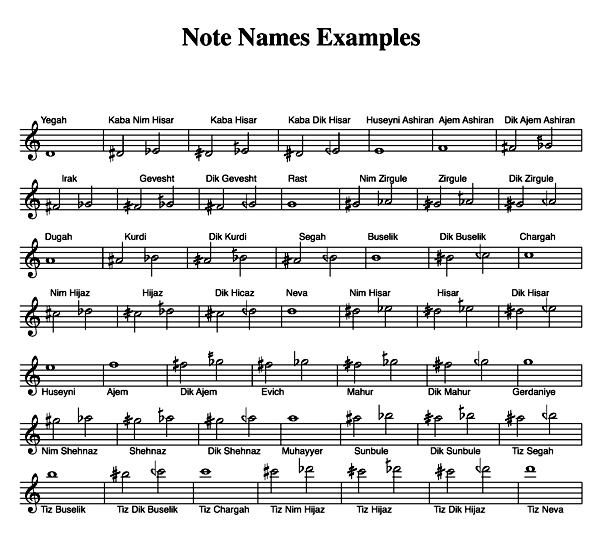Before we go on there are some important things you should know about notation (the names of the notes, the ways they are written) in Middle Eastern music.
Then we have the naming system used in Arabic and Ottoman
Classical music, in which each individual note has a specific name.
I'll be listing below an insert which shows some of the notes and their
names (with Anglicized spellings). In Ottoman music, the music is written in set keys, usually the key of G or A, though it is played in the key of our own preference/necessity (the key is not important, the intervals are).
In other words, the notes on the paper are merely place holders, showing us the general melody and intervals. You can always play in whatever key you want, with the most common tunings being Bölahenk and Kız tuning (transposing down a fourth or a seventh, respectively). The names of the tunings come from the ney size which corresponds to each key.
In Arabic music we have a similar situation. The scores are usually written in D or C, but played as in Ottoman music in any desired key. Check out this page for more information about Arabic Classical Music:

